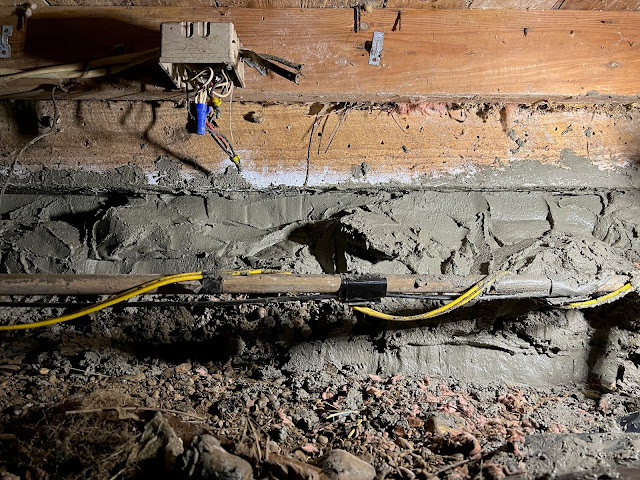In the Darkest Depths of Mortar
Mine's a tale that can't be told
My freedom I hold dear
How years ago in days of old
When magic filled the air
T'was in the darkest depths of Mordor...
-Led Zeppelin (with a nod to Tolkien)
Disclaimer: I'm not advocating below method, but it is what I did.
We don't know the full history of this house, but it's obvious it was built in at least two distinct phases.
The older part started as a basic cabin--heavy beams set on blocks with an open crawlspace. That is to say, it did not start with a proper foundation. At some later date, the gaps between the blocks were filled in with loose rocks, possibly to keep larger critters out. At least that's my best guess. (Another possibility is that when the pipes burst (two owners ago), it washed away the mortar from between the stones, but that seems less likely.)
Two thirds of the house is a later addition set on a proper perimeter foundation. But the original part is more of a self-supporting box set on a handful of legs. The main beams are stout and intact (mostly 😬), but I wanted to firm up the rock walls between the support blocks to at the very least close the air gaps as well as perhaps provide a measure of additional support in case things shift for some reason.
In my experience, Flex Seal products are overhyped, but I had a partial can left over from a different job so I sprayed it on the beams because you never want bare wood in contact with concrete/cement/mortar.I mixed my high compression strength mortar a little on the soupy side so it would flow into the gaps, then I alternately flung and troweled it into place, pushing it in as much as possible. The result wasn't pretty but it was solid.
I don't know how much good this does but it seems better than nothing. Maybe I should ask my maternal grandmother's brother's daughter's husband, one of the world's foremost experts on the subject.


Comments
Post a Comment